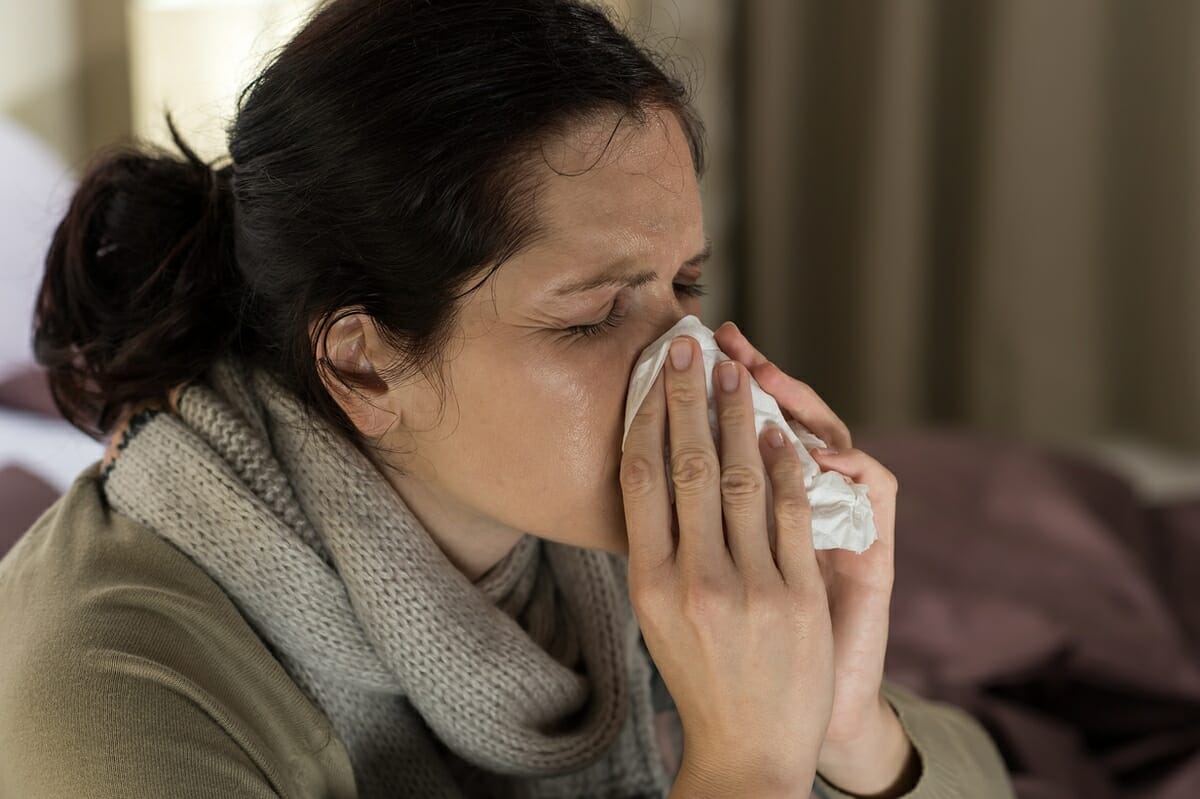Photo above: Beaufort Memorial Nurse Practioner Ronda O’Connell with patient. Photo courtesy of BMH.
By Amy Rigard
According to the South Carolina Department of Health and Environmental Control (DHEC), more than 17,000 cases of influenza have been reported in South Carolina so far this flu season, which begins in October.
The season, which typically begins in October, seems to be peaking throughout much of the country, with widespread activity reported in nearly every state and territory, according to the Centers for Disease Control and Prevention. The CDC’s weekly reporting has shown a steady increase in the number of reported flu cases in the past few weeks throughout much of the country. And South Carolina is no exception.
For the week ending January 6, 2018, the number of flu-related reported hospitalizations in South Carolina increased by more than 87 percent compared to the previous week, according to DHEC. DHEC reports that during South Carolina’s current flu season, there have been 830 influenza-associated hospitalizations and 15 influenza-associated deaths reported.
Dr. Kurt Gambla, Beaufort Memorial Hospital Chief Medical Officer, said that while the prevalence of the flu nationally is projected to track twice the normal rate, Beaufort Memorial Hospital is on par with last year’s flu season with about 65 cases per week. He noted that the season does seem to be coming close to peak, and the hospital has experienced an increase in the number of respiratory infections overall.
It’s that increase in respiratory infections that prompted the hospital to impose visitor restrictions effective January 5. According to a press release issued by the hospital, adults experiencing flu-like symptoms are encouraged not to visit patients in the hospital for the immediate future. The hospital is now restricting visitors under 18 and asking the community to limit hospital visits to one visit per patient as a precaution to help prevent further spread of the flu and other viruses.
Different strains of the flu circulate each year. According to the CDC, more than 80 percent of this year’s flu cases involve the H3N2 strain. This A virus subtype H3N2 is particularly virulent, according to Gambla. H3N2 has traditionally hit people harder than other seasonal flu strains and can be especially worrisome among vulnerable populations such as the elderly and children.
Complicating matters this season is that the flu vaccine isn’t completely effective against this particular strain. Gambla noted that formulating the flu vaccine each year is somewhat of an inexact science akin to forecasting the weather since it’s difficult to predict which flu strains will be present each year.
Gambla noted that one of the best ways to prevent the flu is to get the flu vaccine. He noted several myths or misperceptions that are common regarding the vaccine. “The number one myth is that the flu vaccine can cause the flu,” said Gambla. “That’s not true. It’s a dead virus, so it cannot cause the flu.”
Some other myths Gambla said are not true are that people don’t need to get the vaccine every year, that it’s not safe for pregnant women, that the side effects are worse than the actual flu, and that it’s too late in the season to get the vaccine. Flu season typically extends through March but can sometimes last until May, so Gambla said there is still time to get and benefit from the flu vaccine.
Populations most at risk for getting the flu include anyone who isn’t vaccinated, children under 5, and adults older than 65. In addition, anyone with chronic illnesses such as asthma, emphysema, heart disease, or diabetes could be at increased risk. Gambla emphasized that anyone, even healthy people with no other apparent risk factors, can get the flu and can even die from the flu. He noted, however, that many fatalities related to the flu are actually caused by pneumonia, which the flu can evolve into.
Flu symptoms, which can include fever, cough, sore throat, runny nose, muscle aches, and fatigue are similar to cold symptoms. Gambla said that people with the flu often get a lot sicker a lot faster, and flu symptoms can last longer than symptoms associated with the common cold. Anyone who feels they are getting progressively sicker, has a high fever that won’t go away, has difficulty breathing, or develops a productive cough should seek medical treatment.

Is It a Cold or the Flu?
Different viruses cause the common cold and the flu – both respiratory illnesses. According to the Centers for Disease Control and Prevention (CDC), because the two have similar symptoms, it can sometimes be difficult for patients to know which they have based on the symptoms alone. Special tests can be done within the first few days of illness to determine whether an individual has the flu.
According to the South Carolina Department of Health and Environmental Control (DHEC), flu symptoms may include:
- Sudden onset of fever
- Chills
- Cough
- Headache or muscle aches
- Tiredness
- Sore throat
- Nasal congestion or stuffiness
- Some people may experience vomiting and diarrhea, though this is more common in children than adults
Cold symptoms are similar but are generally milder than flu symptoms and typically don’t last as long. According to DHEC, the time from exposure to the flu virus and infection to when symptoms begin is about one to four days, with an average of about two days.
Patients experiencing signs of the following should seek immediate care from the emergency department:
- Difficulty breathing
- Chest or abdomen pain
- Dizziness
- Confusion
- Severe vomiting
Those caring for sick children need to watch closely for the same symptoms. In addition, parents and caregivers should also bring their child to the emergency room if they have the following symptoms:
- Bluish skin
- Not waking or interacting
- A fever with a rash
Preventing the Flu
The CDC recommends a yearly flu vaccine for individuals six months of age and older as one of the best ways to protect against flu viruses. Other preventative measures include:
- Try to avoid close contact with sick people.
- If possible, stay home from work, school, and errands when you are sick to help prevent the spread of germs to others.
- If you are sick with flu-like illness, stay home for at least 24 hours after your fever is gone except to get medical care or for other necessities.
- Cover your nose and mouth with a tissue when you cough or sneeze and then toss the tissue in the trash.
- Wash your hands often with soap and water. If soap and water are not available, use an alcohol-based hand rub.
- Avoid touching your eyes, nose, and mouth.
- Clean and disinfect surfaces and objects that may be contaminated with germs.
- Practice other good health habits such as getting plenty of rest, being physically active, managing your stress, drinking plenty of fluids, and eating nutritious food.









